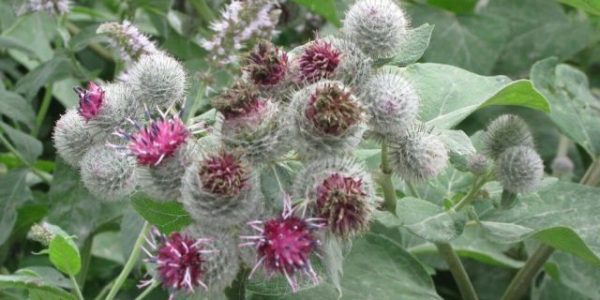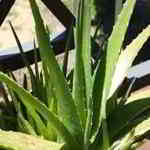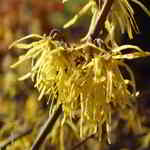For our ancestors, wild plants were the principal food and the “survival kit.” But if you are without food or a first aid kit in the wilderness – for whatever reason – can you recognise common wild plants that can save your life? Some of us really can’t. The vegetables and herbs are easy to pick when you shop, because they are all edible. The same thing when you go to the drugstore and you need to treat an injury.
Some wild plants have adapted to very small environments, unique environments, extraordinary soil or very harsh climates. While certain forms of plants survive only within a very limited range (endemism) for these reasons, others that live in various areas or through adaptation to specific conditions. However, all the plants described bellow can be found on US territory. Some of you may have used one or two of it already.
Edible Wild Plants
Edible wild plants have much more nutrients than their home counterparts – if any. Without the aid of modern agricultural practices wild plants have lived on their own. Only the strongest wild plants survived; leaving the best; and the most nutritious line for the species to continue. Keep in mind that any domestic plant starts from a wild edible plant.
The question is how to differentiate between a wild plant that is poisonous and one can save your life. Gregory Davenport, author Wilderness Living suggested that you stay away from mushrooms, umbrella-shaped flower clusters, onion-like or garlic-like bulbs, carrots like leaves/roots, bean and pea like fruits, plants with shiny leaves or fine hairs. Unfortunately, this list also excludes many very useful wild edible plants, but it will also allow you to avoid some very harmful poisonous ones.
These 10 wild edible plants can also save your life during a food crisis. There is evidence that many people survived the food crisis during the Holodomor (1932-1933 Ukrainian Famine), by fleeing to the forests or wild parts of the country.
1 Blackberries
Most wild berries are not suitable for human consumption. Natural blackberries are easy to identify and are 100% edible. Found all over the USA. Do not confuse raspberries with blackberries which are wild. The stem of the blackberry even comes off the branch whilst a raspberry’s doesn’t. Additionally, blackberries have red branches with large long thorns, jagged green leaves. They have white, 5 petalled flowers.
2 Daylily 
Daylilies have an orange flower with 6 petals. Flower lasts only a day. This has the stem of a leafless herb. Ensure there are no leaves. Many poisonous species have leaves on the stalk. It has light green leaves which are long and has pointed tips. The root has small tubers. The whole plant can be eaten raw or cooked. Can also cook the tubers. Found all over America.
3 Plantain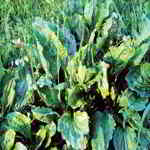
Plantain can be found in virtually any environmentEssentially a weed, but it can be consumed. Broadleaf plantain has green oval leaves. The leaves are with thick stems. From the stem emerge long pointed green flowers. The leaves grow in a rosette and can length from 1-12 inches. Pick and cook the green leaves, or eat them raw.
4 Wild bee balm (Wild bergamot)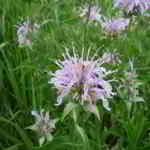
Wild bergamot can be found throughout the whole of America. It usually occurs in large clumps. The plants are typically up to 3 feet tall with a few erect branches. Normally, the leaves are 3 inches long, dented, and pointed. The flowers cluster at the end of the branch. The flowers are usually lavender (or even pink) in color. The leaves and/or are to be roasted or eaten raw. We may also use leaves and/or flowers to prepare tea.
5 Pineapple weed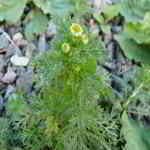
This is often confused with chamomile. When smashed Chamomile does not emit a hint of pineapple. Located in the woods in sandy locations, the hairless leaves look like feathers and are around 1 inch long. It is a wild plant which grows small. The yellow-greenish flowers are shaped like cones. One should eat leaves and flowers. Leaves can be used to make tea, as well.
6 Amaranth
These wild plants that can save your life grow in the wilderness and are delicious. They get 35 – 59 inches tall. They have alternate leaves and very small dense flowers on top. The seeds are brown or black. All parts of the plant are eatable. However, look out for sharp spines on the leaves. You may boil the leaves before eating, but you can eat them raw too. The seeds can turned into flour.
7 Cattail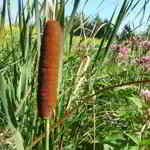
It has a brown cigar shaped head that stands on top of a very long stem. Cattails can grow up 6 feet. The leaves are linear and flat. They are around 3mm wide. They are usually found close to wetlands. The underground rootstock can be boiled or eaten raw. The stem can also be eaten raw or cooked with especially the white part at the bottom being tasty. You can boil the leaves as spinach. The flowers can be roasted and eaten.
8 Curled dock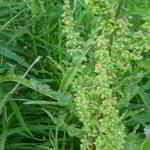
These wild plants can be found all over America. Its main characteristic is the leaves that curl around the edges and has a lance shape. It has a long, red stalk that reach up to 3 feet. Flowers are green. The flower is located right on top of the stem. Peel the stems and eat them raw. The leaves must be boiled a few times to get rid of the bitter taste. The root can be used to make a bitter tea. The seeds can be used as a caffeine substitute and thus boiled and used as coffee.
9 Wood sorrel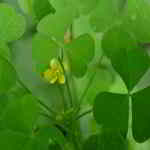
These wild plants are found all over America. The leaves nearly look like a shamrock. The seed pods bends quickly upwards as well as the stalks from the main stalk. It’s a yellow, 5 petal flower that has a straight pistil. The leaves are compound and three heart shaped leaflets on each. The plant grows 3-13 inches high. This plant is a thirst quencher and all parts are edible. The leaves, flowers and seed pots has a sour taste, but really refreshing.
10 Dandelion
Dandelion is extremely common in the wilderness. These wild plants have a rosette base with lots of flower stems and leaves. The toothy leaves are usually between 2-11 inches long. The flower is easily distinguished with its yellow color and rosette look head. All the parts of this plant are eatable. The mature leaves may taste bitter though, so boil them first. The root should also be boiled first before eaten.
Related: The Health Benefits of Prickly Ash
Healing Wild Plants
Before the 20th-century scientific breakthroughs, mankind had a long tradition of indigenous use or natural use, plants for a wide range of medicinal purposes. Some of those methods are used to treat patients even today. Medicinal plants are as diverse as the people who use them, and their applications.
In the wilderness or in a major SHTF situation, it can be crippling or deadly to get a disease of any type. Infections will reach your immune system and cause you to dry out. When you don’t have any medication, you can still turn to wild plants to save your life. So what plants and natural herbs can cure you?
Before antibiotics there was garlic. Garlic was used to treat almost every form of dysentery-influenza infection. This booster of the immune system contains active sulfur compounds that combat infections. The garlic sulphur compounds act just as powerful as penicillin as antibiotics.
1 Aloe vera
It is a succulent plant species. It has a short stem and a rosette of leaves. It produces yellow flowers on a stick like stem. Aloe vera is used in many remedies. Out in the wild the gel of the leaves can be used as anti-septic for cuts, scrapes, and burns. Aloe vera helps eliminate dry skin and sun burn as well. This wild plant that can save your life as a remedy is also edible. However, take caution: eating the wrong part of the Aloe vera plant will result in severe vomiting, loose stool, and painful bowel movements. Avoid the green-yellow part of the plant that can be found at the bottom of the plant’s stalk. Remove the skin and inner layer of juice and you will find a very important, highly coveted gel substance.
2 Canada lily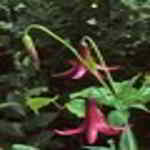
This wildflower is 2-4 inches tall and is unbranched. Found in various wild parts of America, this flower has healing properties. Should you be bitten by a spider, take the flower and chew it in your mouth until there is a paste (poultice). Take the paste and rub over affected area. This will draw the poison out.
3 St. John’s wort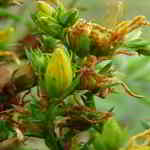
Commonly found in dry soil, fields and pastures all over America. It has a woody base, yellow flowers and opposite leaves with transparent dots. The plant can grow up to 3 feet. The fresh flowers can be boiled in water and the extract used to put on sunburn, scratches, and cuts. This plant has many herbal remedies and the tea can also be drunk for insomnia.
4 Nettle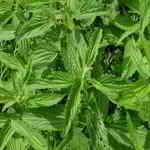
Most people must have been stung by the stinging nettle. It is found all over. It has sharp, stingy hairs and small white flowers. When collecting this plant, please ensure that all exposed skin is covered. It has an itchy, burning sting to it which might last for a couple of hours, even days. Use the leaves and boil them in water when you get bladder infection and can’t urinate whilst hiking or camping. You can boil the roots to increase the effect. Also eatable!
5 Mullein (cowboy toilet paper)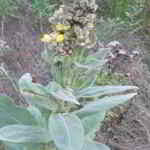
These wild plants are found all over America. In its first year, it has a rosette of soft leaves. In its second year, Mullein has a long stem with small yellow flowers and soft leaves. The leaves can grow up to 19 inches long. The plant itself can grow over 6 feet high. The leaves can be used as a poultice for back pain. Boil water and place leaves inside. Let it simmer for two minutes and then apply the leaves directly on pain.
6 Comfrey
Found throughout America, it has a distinctive purple or white bell shaped flowers. It is a rough, hairy wild plant found close to water. The plant’s leaves can be used to make a tea and applied locally to treat insect bites, stings, burns, irritated skin, inflamed skin or wounds. Do not drink the tea.
7 Horsetail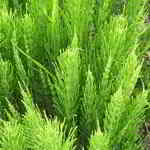
These wild plants are found close to rivers and streams. Horsetail has a green leafless stems which is tubular in shape. The plant can get 3 feet high. Take the whole plant and boil. Take the froth and apply it to bleeding wounds. You can drink the tea for stomach pains. This plant can even be used as a tooth brush.
8 Witch hazel
This wild plant has been used for centuries by American Indians and is found across America. It’s multi-trunked and grow up to 15 feet high. The flower is individualistic as it’s fragrant and the petals look crumpled. It has green leaves and a smooth grey bark. Should you pick up eye inflammation, soak a rag or shirt in cold water in which the leaves have been soaked. Place it over your eyes for 10 minutes. The redness will be gone and your eyes refreshed.
9 Yarrow
It grows throughout America and typically found in fields and meadows. The plant grows up to 3 feet high and has white, clustered flowers on the top of the stalks. The flower can be boiled in water and the extract drank for headaches, diarrhea and flu. The yarrow tea prevents clotting so do not drink it if you have a bleeding wound.
Related: Sour Tea Helps You Avoid High Blood Pressure
10 Burdock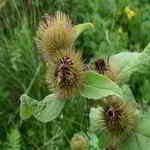
It is an annoying weed with burrs sticking all over your clothes. It has large wavy leaves which are green on top and white at the bottom. The flowers are purple on top of prickly ball. The florets are surrounded by overlapping hooked bracts. The plant grows 3-6 feet high. Take the leaves and make poultice in mouth. Smear paste over insect bites and stings.


